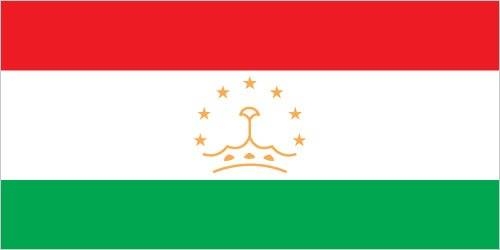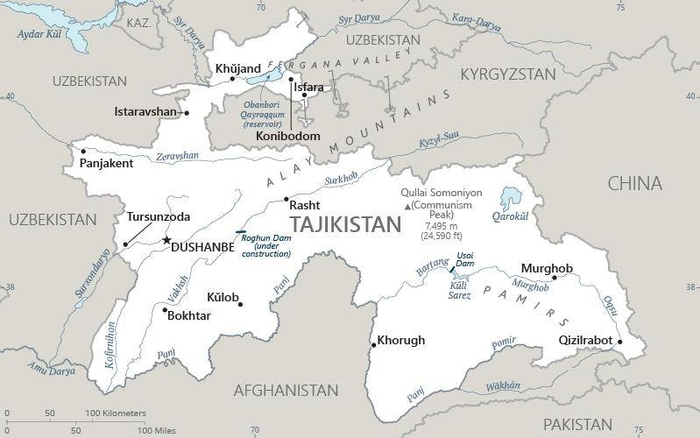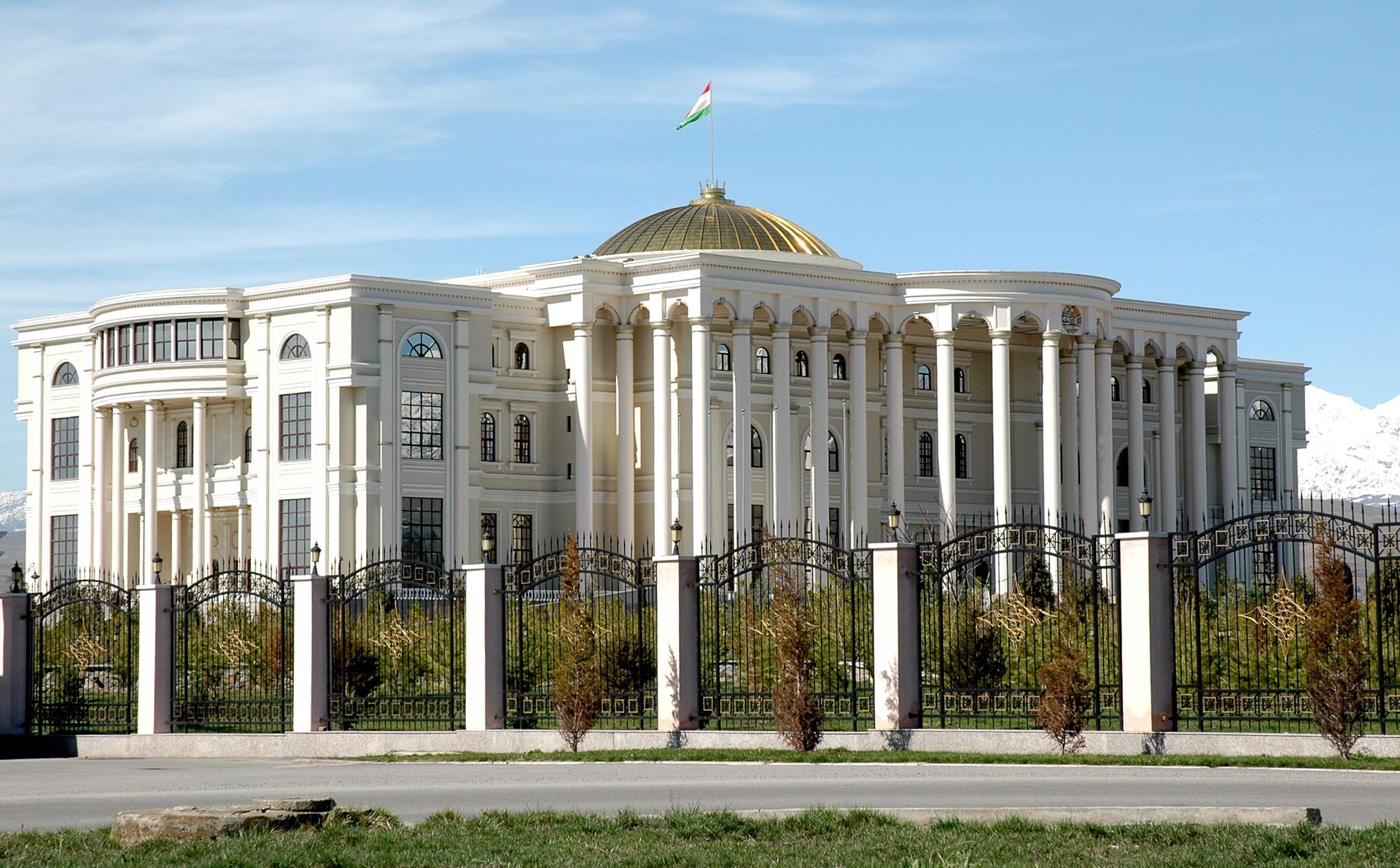168 Tajikistan

Three horizontal stripes of red (top), a wider stripe of white, and green. A gold crown surmounted by seven gold, five-pointed stars is located in the center of the white stripe. Red represents the sun, victory, and the unity of the nation, white stands for purity, cotton, and mountain snows, while green is the color of Islam and the bounty of nature. The crown symbolizes the Tajik people. The seven stars signify the Tajik magic number “seven” – a symbol of perfection and the embodiment of happiness.
Flag courtesy of the CIA World Factbook

Map courtesy of the CIA World Factbook

The Palace of Nations in Dushanbe
Government
According to Britannica, in 1994 voters approved a new constitution to replace the Soviet-era constitution that had been in effect since 1978 and amended after independence. The new constitution established legislative, executive, and judicial branches. Tajikistan’s constitution provides for a strong legislature. Executive authority is held by the president, who serves as the head of state. The president is elected directly for a maximum of two seven-year terms and appoints the cabinet and high court justices, subject to approval by the legislature. The prime minister, also appointed by the president and confirmed by the legislature, serves as head of government.
Tajikistan is a republic with two legislative houses: the National Assembly and the Assembly of Representatives. The legislature has the authority to enact and annul laws, interpret the constitution, and confirm presidential appointees. Legislative elections are held every five years under a mixed system. Members of the Assembly of Representatives, the lower chamber, are elected by popular vote to five-year terms; 41 are elected by constituency, and 22 are elected by proportional representation. Eight of the members of the upper chamber, the National Assembly, are appointed by the president, and 25 are indirectly elected by local deputies to serve five-year terms. In addition, one seat is reserved for each former president. The indirectly elected members represent regional constituencies: five come from each viloyat (province or region), five come from the unincorporated region, and five come from the city of Dushanbe.
Although the constitution lists numerous rights and freedoms of citizens, it provides a mechanism by which these rights and freedoms can be, and are, severely restricted by law.
The country is divided into three viloyats, Sughd, Khatlon, and Mountainous Badakhshan (also known as Gorno-Badakhshan) viloyati mukhtori (autonomous region), while a region in the middle of the country remains unincorporated and under the direct governance of the central government. Each viloyat or region is divided into several districts, of which there are 58 throughout the country.
The highest courts include the Constitutional Court, the Supreme Court, the Supreme Economic Court (for commercial cases), and a Court of Gorno-Badakhshan, which has jurisdiction over the Gorno-Badakhshan autonomous region.
Civil Aviation Agency (CAA)
Airspace
SkyVector – Google Maps – ADS-B Exchange
ICAO countries publish an Aeronautical Information Publication (AIP). This document is divided into three parts: General (GEN), En Route (ENR) and Aerodromes (AD). ENR 1.4 details the types of airspace classes they chose to adopt from classes A through G.
Drone Regulations
None found by the author.
However, should you, the reader, happen to stumble across something to the contrary, please email the author at FISHE5CA@erau.edu and you may be mentioned in the ACKNOWLEDGEMENTS section of this book by way of thanks for contributing to this free eBook!
Advanced Air Mobility (AAM) Regulations & Policies
None found by the author.
However, should you, the reader, happen to stumble across something to the contrary, please email the author at FISHE5CA@erau.edu and you may be mentioned in the ACKNOWLEDGEMENTS section of this book by way of thanks for contributing to this free eBook!
Advanced Air Mobility (AAM) News
None found by the author.
However, should you, the reader, happen to stumble across something to the contrary, please email the author at FISHE5CA@erau.edu and you may be mentioned in the ACKNOWLEDGEMENTS section of this book by way of thanks for contributing to this free eBook!
Short Essay Questions
Scenario-Based Question
You have been hired by a Drone Startup Company. Your boss has immediately assigned this job to you.
They need you to prepare a one-page memo detailing the legalities of using a drone to film the Palace of Nations, pictured above.
They need you to mention any national laws and local ordinances.
They specifically want to know what airspace (insert pictures) you will be operating in and whether or not you need an airspace authorization.
Does it matter whether or not you are a citizen of the country?
Lastly, there is a bonus for you if, as you scroll through this chapter, you find any typos or broken links!
Short Essay Questions
- What are the drone categories?
- How is registration addressed?
- How is remote ID addressed?
- What are the model aircraft rules?
- What are the commercial drone rules?
- Are there waivers or exemptions to the rules? If so, for what?
- Would you share a link to an interactive airspace map?
- How is BVLOS addressed?
- How can you fly drones at night?
- How can you fly drones over people?
- Where do you find drone NOTAMs?
- What are the rules for drone maintenance?
- What are the rules for an SMS program?
- What are some unique rules not mentioned above?
- What are the C-UAS rules?
- What are the AAM rules?

